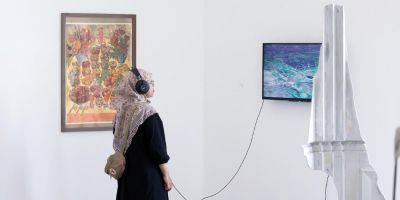Researching the story of electricity at Harewood House
A collaborative research award has been awarded to the Electrifying the country house project and Harewood House Trust for looking into how Harewood House adopted electricity.
Electrifying the country house is based at the University of Leeds, led by Professor Graeme Gooday (School of Philosophy, Religion and History of Science) and Professor Abigail Harrison Moore (School of Fine Art, History of Art and Cultural Studies), alongside researcher Dr Michael Kay. Funded by the Arts and Humanities Research Council between May 2015 and July 2016, the project worked in partnership with houses run by the National Trust and Leeds Museums and Galleries (Cragside, Standen and Lotherton Hall).
The starting point for the project was research by Gooday and Harrison Moore into the social history of electrification which was applied to each of the three partner houses ― with additional supplementary research by Kay where necessary ― to produce educational visitor resources for the partner houses regarding their historic electrical technologies. These new resources included house trails, animations, video content, talks for house volunteers and the public, and an online interactive teaching resource for Key Stage Two pupils.
This latest £5,000 funding from The Exchange, a network developed to nurture collaboration between academics and creative small to medium sized enterprises, will allow Dr Michael Kay (School of Philosophy, Religion and History of Science) to work in collaboration with the Harewood House Trust. This new initiative, Electrifying the Country House – Harewood’s electricity story, commenced on 20 June and will run until 19 September 2016.
Princess Mary, 6th Countess of Harewood, was instrumental in electrifying Harewood House. A rich archive exists which will provide the basis for the research. From this archive, held at Harewood and the West Yorkshire Archive Service, the research aims to discover the important role Princess Mary played in electrifying Harewood and what the wider role of women was in adopting electric lighting in country houses. Further research will be done into the early use of hydroelectricity at Harewood from 1901.
The results will feed into a drama workshop for family audiences which will take place on 21 August at Harewood, involving Theatre and Performance graduates from the University of Leeds who will tell the story of electrification at Harewood through performance. The research will also inform new training for guides and volunteers. The existing lighting display, which is located Below Stairs, will be re-interpreted as part of this work.
At the University of Leeds, a workshop will be held for pupils from IntoUniversity as part of their summer programme. IntoUniversity offers an innovative programme of activities that supports young people from disadvantaged backgrounds, inspiring them to achieve and in particular to aspire to university study. After seeing the drama performance and interacting with the characters, the pupils will devise and perform their own short pieces of drama.
A drama workshop, with museum object handling and craft activity, will take place at the University of Leeds on 11 September as part of the Heritage Open Days.
Professor Ann Sumner, Historic Collections Adviser at the Harewood House Trust and a Visiting Professor in the School of Fine Art, History of Art and Cultural Studies, said:
“This project will see Harewood House Trust collaborate with Dr Michael Kay whose archival research will inform the interpretation of the new display for our lighting cupboard and enable us to show fascinating documents relating to the electrification of Harewood, across our State Floor Rooms. The project has already revealed a number of exciting stories about Harewood’s early electricity history such as how Chippendale pieces were adapted by Princess Mary for electric lighting and we much look forward to the up-coming dramatic productions.”
Dr Michael Kay said:
“This project gives us the exciting opportunity to tell a new story about electricity at Harewood, through new archival research and interpretative materials. Working with actors will allow us to bring to life the people involved in this story, which will be fun and engaging for young audiences.”




